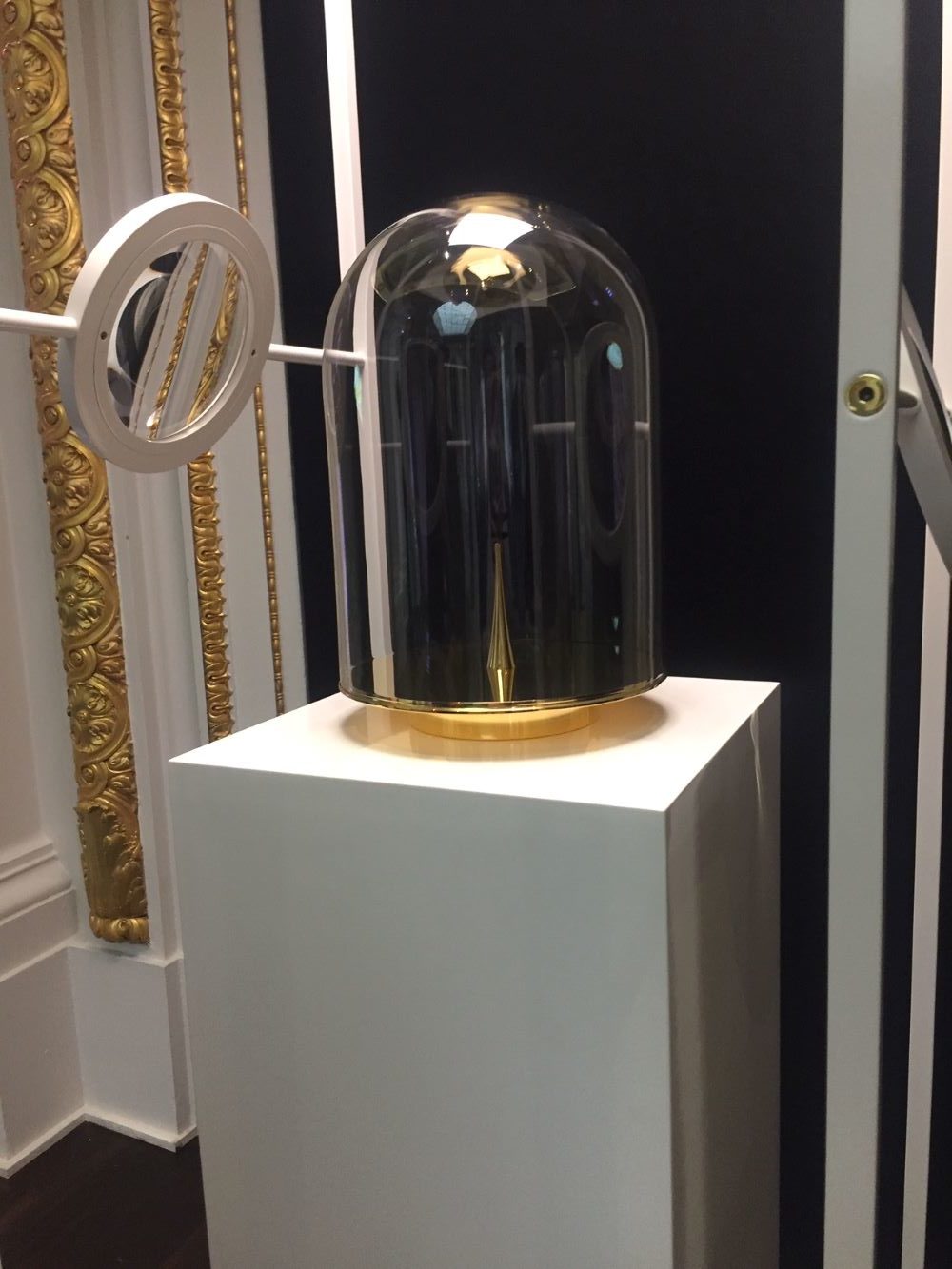
Photo by Eileen Kinsella
In a remarkable new mashup of art and science, an artist has used the blackest black ever created to make a 16.78-carat yellow diamond completely “disappear.” The result of the intensive 5-year long project called The Redemption of Vanity, the super-black diamond currently sits on view in an unlikely, but—as explained to artnet News—very fitting venue: the New York Stock Exchange on Wall Street.
The project is a collaboration between German-born, Boston-based Diemut Strebe, an artist-in-residence at the MIT Center for Art, Science, and Technology, and Brian Wardle, professor of aeronautics and astronautics at MIT, along with Wardle’s group, necstlab. The diamond—graciously supplied by jeweler LJ West after the artist was turned down by a string of famous diamond merchants over branding concerns—sits in a glass vitrine inside the NYSE’s elaborate Federalist-style boardroom. It has been coated with ultrablack carbon nanotubes (also called CNTs), microscopic filaments of carbon that capture at least 99.995 percent of any incoming light, making it the blackest material in existence.
The effect is stunning. The normally sparkling gem appears to the viewer as a flat, black void. As an added flourish, large magnifying glasses set on either side of the vitrine allow viewers to peer through to get an even better look at… well, nothing.
A magnifying glass on the side of the vitrine holding the diamond. Photo by Eileen Kinsella
“Everybody knows that diamonds are the most reflective material on earth,” Strebe told artnet News during the unveiling this past Friday (September 13). “This diamond, which is valued at $2 million, is covered with the blackest black on earth and kind of makes the diamond disappear.”
Professor Wardle, who has already received inquiries about CNTs from several artists in the US, praised the artist for helping push the boundaries of the technology. “Strebe’s art-science collaboration caused us to look at the optical properties of our new CNT growth, and we discovered that these particular CNTs are blacker than all other reported materials by an order of magnitude across the visible spectrum.”
In the future, the MIT team is offering the process for any artist to use. “We do not believe in exclusive ownership of any material or idea for any artwork and have opened our method to any artist,” he explained.
The boardroom at the New York Stock Exchange. Photo by Eileen Kinsella
The scientist also told artnet News that he is also currently in talks with NASA about applying the technology to telescopes for searching out exoplanets. “There are many scientific instruments—particularly optical ones—where stray light interferes with the sensing, so they need ultra-black materials to absorb unwanted light,” Wardle explained.
In a statement from MIT, the team behind The Redemption of Vanity also took a swipe at British artist Anish Kapoor, who had moved to get exclusive rights to “Vantablack,” a previous form of light-swallowing paint: “The project can also be interpreted as a statement against British artist Anish Kapoor’s purchase of exclusive rights to a formula of carbon nanotubes as a material for artworks. Strebe and Wardle use a different composition of carbon nanotubes, which will be available for any artist to use.”
The yellow diamond before and after coating with carbon nano-tubes. Image by Diemut Strebe
Uniting Extremes
Strebe describes the current art project as “the unification of the most opposite extremes,” in this case the transformation of a diamond, prized for its brilliance and meant to be shown off, into a kind of non-presence.
The carefully chosen venue—the largest stock exchange in the world—also plays a key role in the concept behind the project. “I thought it would be interesting to present the object here—the holy grail of value determination and generation—which is much different than a museum. This is an interesting place to contemplate value and its man-made arbitrary character.”
Anyone familiar with Strebe’s work and her interest in both science and philosophy will not be entirely surprised at this innovative new presentation. Her previous work, called Sugababe, was also a multi-year undertaking. It involved creating a living replica of the ear of Vincent van Gogh, grown from tissue-engineered cartilage, using cells from a male descendant that she says contained natural genetic information about the artist, and mitochondria from a female descendant of the artist’s mother.
A woman looks on the living replica of Dutch painter Vincent van Gogh’s famously severed ear which is displayed at Culture and media museum ZKM, in Karlsruhe, southwestern Germany, on June 4, 2014. Photo: Thomas Kienzle/AFP/Getty Images.
Strebe has also collaborated with several other MIT faculty members, including Noam Chomsky, Robert Langer, and Regina Barzilay. Yet as immersed as she is in the realm of art and science, she told artnet News, she also envied those working in less experimental media: “Sometimes I’m very jealous of painters. The duration of art and science projects is very complicated and long.”
The Redemption of Vanity remains on view at the New York Stock Exchange through November 25, by appointment.